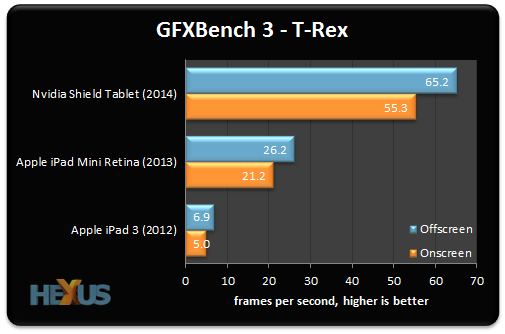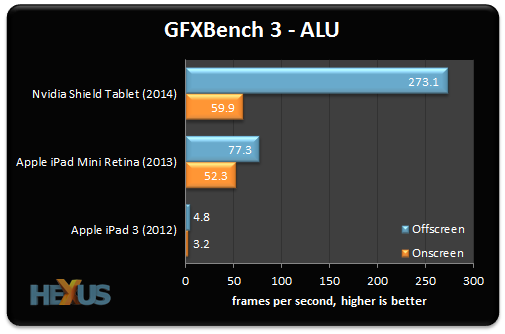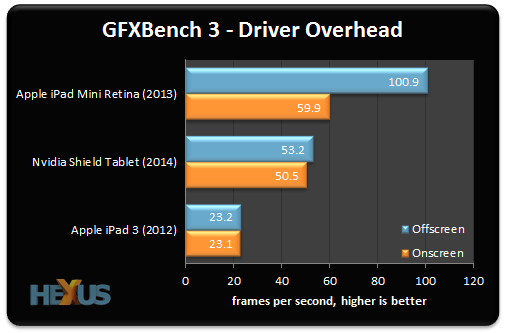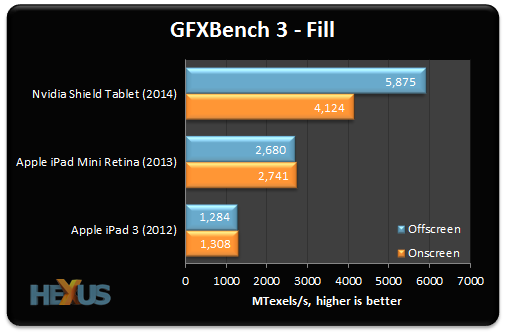Benchmarks: Graphics - Part One


GFXBench provides an insightful look at the graphics performance of each tablet's underlying SoC. Note that the benchmark provides two results: Offscreen, representing standardised 1080p performance and Onscreen, representing performance at the device's native resolution. The Offscreen results are used to cross-compare GPU capability irrespective of screen specification.
The first two tests - Manhattan and T-Rex - involve complex OpenGL ES 3.0 and 2.0 scenes with demanding effects such as specular lighting, cube-map reflection and complex particle systems. It's in these tests that the Tegra K1's graphics advantage is clear to see: the Shield Tablet is 2.5x quicker than the iPad Mini.

The ALU test renders a complex scene to hone-in on shader compute performance, and Nvidia's Kepler-based cores once again come up trumps. This is the same Kepler architecture that's powering many of today's most powerful desktop graphics cards, so the performance shouldn't come as a surprise.

Tegra K1 performance isn't so hot in the Alpha Blending test, mind you.

The Driver Overhead test is interesting in that it barely stresses the GPU but bombards it with simple tasks to generate numerous draw calls that can be used to measure CPU overhead. A highly-efficient system (AMD's Mantle being a good example) will optimise said calls and work efficiently to help increase performance. In this scenario, Apple's ecosystem remains the more efficient.

Rendering multiple layers of compressed textures, the fill-rate test puts Shield Tablet back on top of the pile. Bear in mind, also, that while the Tegra K1's GPU is already impressing, many of these mobile benchmarks aren't yet utilising the chip's full array of supported features, such as DirectX 12 and tessellation.









